Let’s Get Your Constantly Cold Hands and Feet to Stay Warm

If you’re someone who likes the temperature in your home or car to be a few degrees higher than seemingly everyone else around you, there could be something going on beneath the surface that’s worth looking into.
Common triggers of cold hands and feet include the environment, smoking, and certain medications.
The sensation of cold hands and feet can result from your body reacting to the temperature of your environment. In cold temperatures, circulation decreases in the arms, legs, ears, and nose so that the rest of the body will stay warm to protect the organs. When the temperature outside is below freezing, ice crystals can form on the areas with reduced circulation.
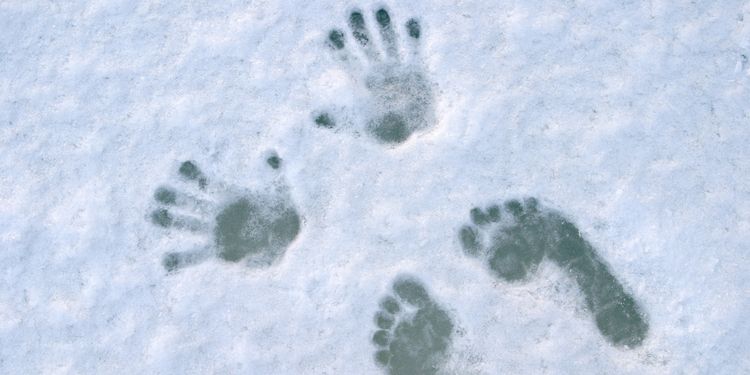
Pernio is an inflammatory skin condition that usually happens in cold, damp weather, often mistaken as frostbite. Pernio will develop in susceptible individuals who have been outside for long periods of time such as from shoveling snow, downhill skiing, or snowboarding. Pernio causes painful lesions and itchy bumps on the fingers or toes that can last for several weeks but eventually subside.
Frostbite is the most severe cold injury. Shallow and deep tissues freeze from ice crystal formation, and the skin shrinks and tears. Irreversible tissue damage occurs with loss of feeling. When tissue damage progresses this far, amputation may be necessary.
Hands and feet can also feel cold if the temperature of the building you are in is kept at a cool temperature or if you aren’t wearing warm enough clothing.
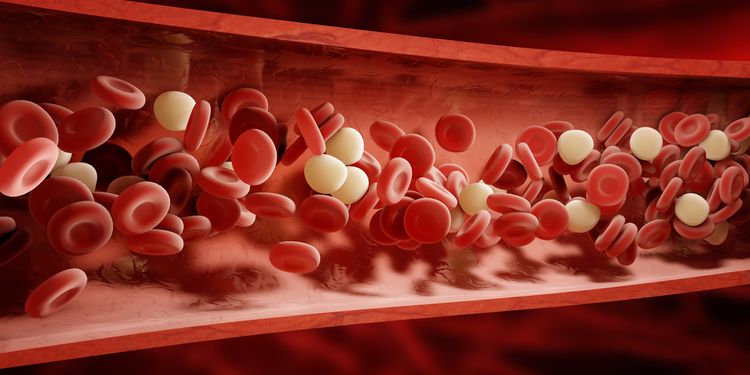
Smoking causes blood vessels to constrict, reducing blood flow to the extremities. If you are chronic smoker, you may find your hands and feet are constantly cold. Smokers—especially those who live colder climates—also tend to expose their fingers to cold weather.
Medications that alter your circulation can have the side effect of making your hands and feet cold. This is often seen from beta blockers and some headache/migraine medications. Beta blockers are used to treat high blood pressure by decreasing heart activity and lowering blood pressure, which also reduces blood flow to the extremities.
Headache and migraine medications also constrict the blood vessels and slow blood flow, resulting in cold extremities.

Root Causes of Cold Hands and Feet
Chronic cold hands and feet can indicate underlying circulatory, nerve, or thyroid dysfunction and genetic conditions:
Circulatory conditions include problems with red blood cells or with blood vessels. Problems with red blood cells are often diagnosed as a form of anemia. Problems with blood vessels can be the result of damage occurring from excess levels of blood sugar often seen in type 2 diabetes. High blood pressure can also result in a narrowing and hardening of the arteries. Nerve damage can also be a problem with uncontrolled diabetes.
Lupus is an autoimmune (AI) disease characterized by shrinking blood vessels located in the hands and feet.
Raynaud’s disease is also an AI condition where the blood vessels in the hands constrict when exposed to cold or stress, narrowing vessels and temporarily limiting blood supply.
Hypothyroidism occurs when the thyroid produces less than adequate amounts of hormones, leading to an overall reduced body temperature.
Buerger’s disease is a rare disease of the arteries and veins in the arms and legs where blood vessels become inflamed, swell, and can become blocked with blood clots.
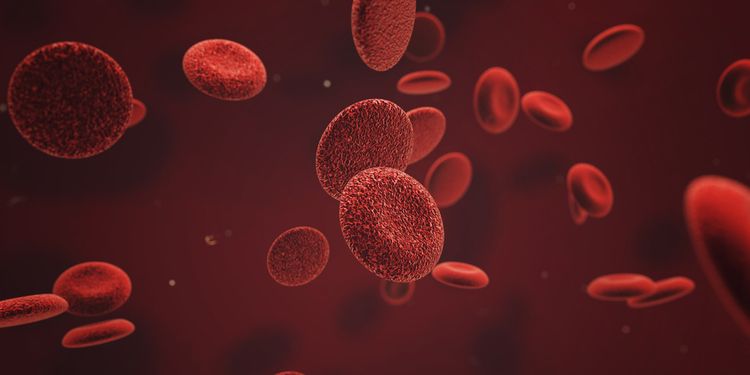
Root Cause of Cold Hands and Feet: Anemia
Anemia can be the result of deficient red blood cell (RBC) or hemoglobin production, excessive RBC destruction, or excessive blood loss. Often pale skin, fatigue, weakness, and cold hands and feet are symptoms. Vegetarians, vegans, the elderly, and women are at higher risk.
Iron deficiency anemia (IDA) is prevalent in the United States and the most common cause of anemia, which often goes undiagnosed. Anemia can occur from lack of vitamins and minerals, certain diseases and bone marrow disorders, NSAIDS, birth control pills, inadequate production of stomach acid, and ulcers caused by H. pylori.
Inadequate amounts of iron, vitamin C, vitamin B12, and folic acid will inhibit the body’s ability to make RBCs. A diet deficient in these nutrients will result in a reduced amount available for RBC production. Insufficient stomach acid production can also lead to nutrient deficiencies because the stomach cannot break food down appropriately for maximal absorption. Adequate stomach acid is also required for the absorption of iron and several B vitamins. Disorders of bone marrow will decrease RBC production as well.
RBCs will be destroyed if they are irregularly shaped. Hereditary conditions like sickle-cell anemia and mechanical injury from bouncing around in the blood vessels will alter RBC shape, and these cells will be removed by the spleen, producing anemia.
Excessive blood loss from heavy periods and ulcers can contribute to anemia:

Heavy periods can result in excessive iron being lost. Many women seek out oral birth control pills to reduce their heavy bleeding and help control IDA.
It was recently discovered that oral contraceptives cause changes in the healthy bacteria that live in the gut that also contribute to IDA. A particular group of pathogenic bacteria that grow in a damaged gut are iron-loving bacteria—Actinomyces spp., Mycobacterium spp., pathogenic strains of E.coli, Corynebacterium spp., and many others. These organisms consume dietary iron and leave the person deficient.
A common step for fixing anemia is iron supplementation, but supplementing iron makes these bacteria thrive, bringing unpleasant digestive problems without fixing anemia.14
NSAIDs are routinely used for pain relief, but can cause direct damage to the intestinal tract. Small doses of NSAIDs also have the potential to create an ulcer. H. pylori are bacteria that alter the mucosal lining of the stomach, producing gastric ulcers. Further, the presence of H. pylori decreases the availability of vitamin C in the stomach, which can inhibit iron absorption. H. pylori infection is also associated with vitamin B12 deficiency.15,16
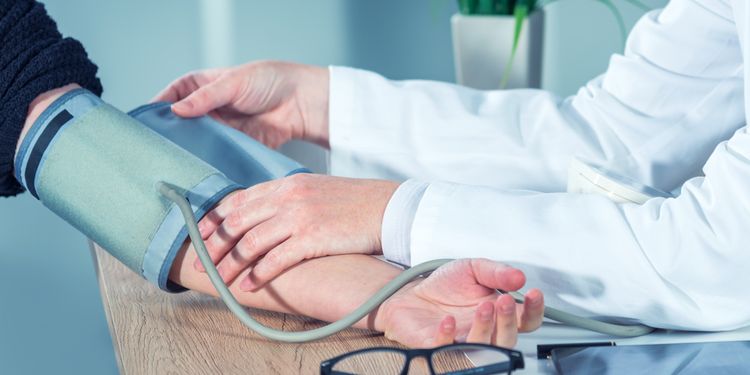
Root Cause of Cold Hands and Feet: High Blood Sugar and High Blood Pressure
Blood vessels are fragile. Chronically high blood sugar and blood pressure damage blood vessels, and the result is poor circulation. In uncontrolled diabetes, elevated blood sugar and insulin directly destroy the arteries. When blood sugar is chronically high, so is insulin (when the pancreas is working properly). Both of these molecules are rough and can scrape the lining of the arteries. Damaged blood vessels are unable to bring optimal amounts of blood to your hands and feet.
High blood pressure will lead to hardening of the arteries and plaque build up. Certain inflammatory molecules like excess blood sugar, insulin, and homocysteine can damage the lining of the arteries. Plaque build up develops in the blood when the environment favors inflammation, as the plaques are used to help plug up the damaged arteries. The plaques are made of cholesterol and become a problem when they are oxidized via inflammation, causing them to constrict and harden. Hardening of the arteries makes the arteries less pliable and able to open to let blood flow through.
Additionally, anyone with low blood pressure can also experience cold hands and feet because blood is concentrated in the torso rather than the extremities. A higher blood pressure is needed to force the blood from the torso into the hands and feet.
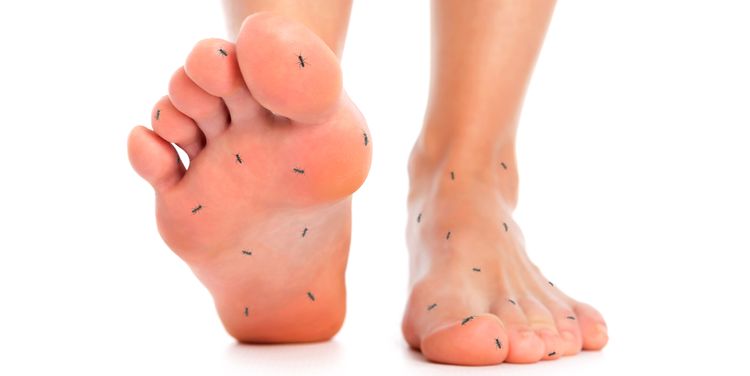
Root Cause of Cold Hands and Feet: Raynaud’s Disease
Raynaud’s disease is an autoimmune condition whose cause is not completely understood. Blood vessels in the hands and feet overreacting to cold temperatures or stressful situations are a major cause of Raynaud’s disease. Over time, these arteries thicken, further limiting blood flow.
Attacks are often triggered by one’s hands coming into direct contact with cold temperatures. Routine events such as putting one’s hands in cold water, holding a cold item, or standing in the frozen section of the grocery store are common culprits.
Emotional stress can also cause an episode for some people. During a Raynaud’s attack, the affected area typically turns white. As oxygen levels drop in the extremities, they can turn blue. Tingling and painful throbbing can be felt.
Symptoms can resolve quickly or may last for hours. Severe Raynaud’s is rare, but it can decrease blood flow to fingers and toes substantially. If the blood vessel becomes completely blocked, open sores and gangrene can develop.
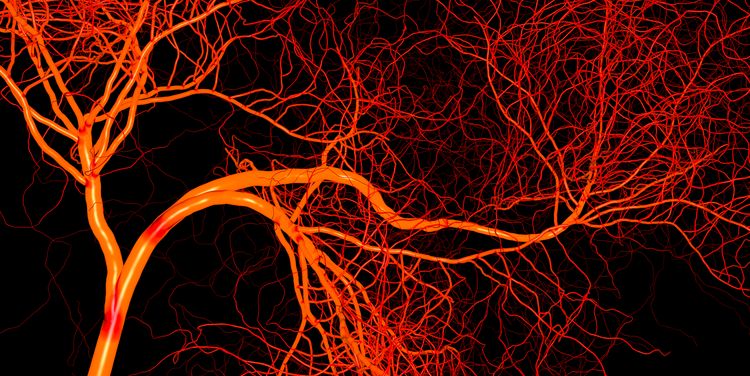
Root Cause of Cold Hands and Feet: Nerve Damage
Nerve-related cold hands and feet can occur from uncontrolled diabetes or carpal tunnel syndrome:
Long-term diabetes can result in neuropathy. Neuropathy is weakness, numbness, and pain from nerve damage, usually in the hands and feet. Prolonged exposure to high blood sugar can damage delicate nerve fibers, causing diabetic neuropathy. Poor circulation and loss of feeling in the hands can not only cause people with diabetes to have cold hands, but also prevent them from realizing when cold temperatures might cause them to frostbite.
Carpal tunnel syndrome is a condition where pressure placed on the nerves in the wrist causes pain, tingling, cold, and numbness in the affected hand. This often occurs from typing on a keyboard daily or repetitive use, as with some sports or occupations that have lots of wrist twisting such a carpentry or plumbing. This can also occur in the feet as tarsal tunnel syndrome.

Root Cause of Cold Hands and Feet: Hypothyroidism
The thyroid is a butterfly-shaped gland located in the front of the neck just below the Adam’s apple, and it produces hormones that help to regulate your body’s metabolism and body temperature.
Hypothyroidism is a condition of underactive thyroid activity, producing less than adequate amounts of thyroid hormone. Deficiencies in iodine, zinc, selenium, DHEA, vitamin E, and vitamin A can trigger thyroid conditions. Hypothyroidism can also be caused by an autoimmune attack on the thyroid, as with Hashimoto’s.
Exposure to gluten can lead to leaky gut and initiate an autoimmune attack on the thyroid as well. In both cases, the production of thyroid hormones is altered, resulting in decreased metabolism, which may manifest as a lower body temperature and/or cold hands and feet. People with hypothyroidism can be slow to warm up, may not sweat with mild exercise, and can be sensitive to the cold. A low basal body temperature of less than 97.6 degrees averaged over at least 3 days can be a sign of hypothyroidism.
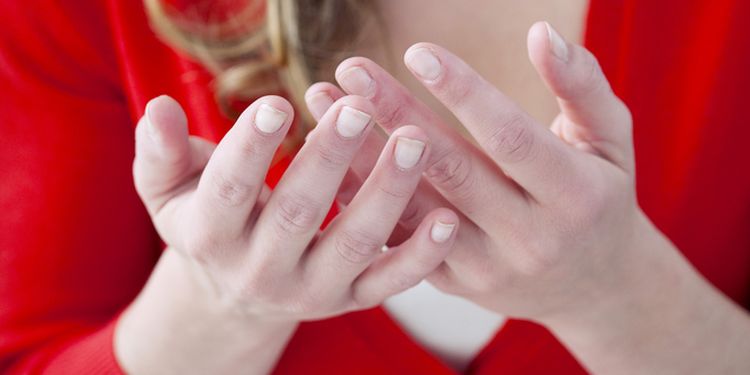
Root Cause of Cold Hands and Feet: Buerger’s Disease
Buerger’s disease creates blood clots in the blood vessels due to swelling and inflammation. Blocked vessels prevent the tissues from receiving oxygen and nutrients. This eventually damages or destroys the tissues and can lead to infection, painful open sores, and gangrene. Buerger’s disease usually first shows signs in the hands and feet that can result in loss of sensation and a cold feeling. It can eventually affect larger areas of the arms and legs.
It isn’t clear what triggers Buerger’s disease, but it’s possible that some people may have a genetic predisposition to it. Most people diagnosed with Buerger’s disease are men under the age of 40. One factor that is seen in almost everyone with Buerger’s disease is that they are smokers or tobacco users. A hypothesis is that tobacco use inflames the lining of the arteries, causing them to swell. Quitting all forms of tobacco is one way reduce the risk of Buerger’s disease.13

Natural Relief from Cold Hands and Feet
Depending upon the cause, making specific changes with natural interventions may improve the severity or frequency of how often your hands and feet feel cold.
The easiest intervention is to wear the appropriate attire for cold temperatures to help keep your hands and feet warm. You can be proactive by dressing in layers for cold temperatures, especially if you go outdoors in the cold.
As a preventative measure, keep your hands and feet as warm and dry as possible. Rewarm your extremities with skin-to-skin contact (this is why mittens are warmer than gloves). Putting your hands under your arms or holding your fingers in a fist will provide warmth.
You can also place your hands and feet under warm running water, massage your hands and feet, and wiggle your fingers and toes.
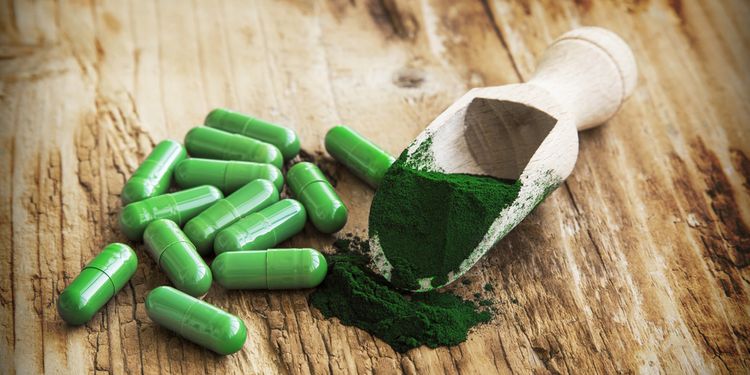
Certain foods, herbs, and alternative therapies may help protect against some of the causes of cold extremities—such as anemia—and improve the health of your arteries, nerves, and thyroid.
Blackstrap molasses is a good vegetarian source of iron, B vitamins, and minerals and can be dissolved in hot water.
Spirulina is an algae superfood rich in proteins, antioxidants, vitamins, and minerals. One study suggests that daily supplementation of spirulina, regardless of other dietary intake, may prove beneficial for major variables associated with anemia, especially for women.2
Alfalfa, dandelion root or leaf, burdock, and yellowdock have traditionally been used to fortify and cleanse the blood. They may help bring levels of hemoglobin into normal range for cases of mild anemia, but these herbs can interact with many medications, so caution is recommended when using them.3
Europeans use the herb gentian, which is a bitter root that stimulates the digestive system to produce more stomach acid, allowing you to absorb iron and other nutrients better.4
Betaine HCl is a nutrient that acts in a similar way to gentian by increasing stomach acid production and promoting the absorption of iron.
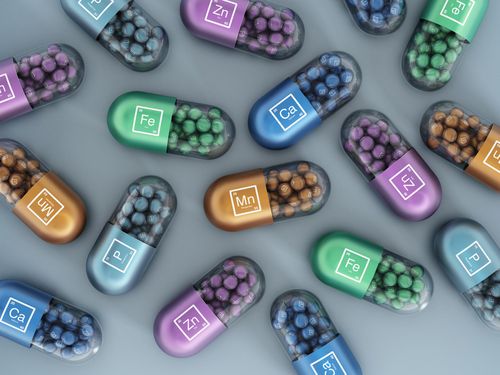
Chromium enhances the body’s sensitivity to insulin and removes excess blood sugar from the bloodstream.
Several clinical studies have shown a relationship between type 2 diabetes and low magnesium. Research suggests low magnesium levels worsen blood sugar control in people with type 2 diabetes.
Vanadium, a trace mineral shown to mimic the action of insulin, can increase the insulin sensitivity of those with type 2 diabetes.5
Alpha-lipoic acid (ALA) is made by the body and is found in every cell, where it helps turn glucose into energy and lowers blood sugar. It is an antioxidant that has the ability to work in two distinct environments of the body: fat and water, which is uncommon. ALA has the ability to quench free radicals and may help people with symptoms of diabetic peripheral neuropathy—pain, burning, itching, tingling, and numbness in their arms and legs from nerve damage.
According to Dr. Mark Hyman, PGX is a super fiber that controls blood sugar and appetite. This fiber can absorb up to 50 times its weight in water, making it one of the most viscous dietary fibers known, aiding in satiety and weight loss. As a fiber, it helps slow down the digestion of carbohydrates and regulates blood sugar.6
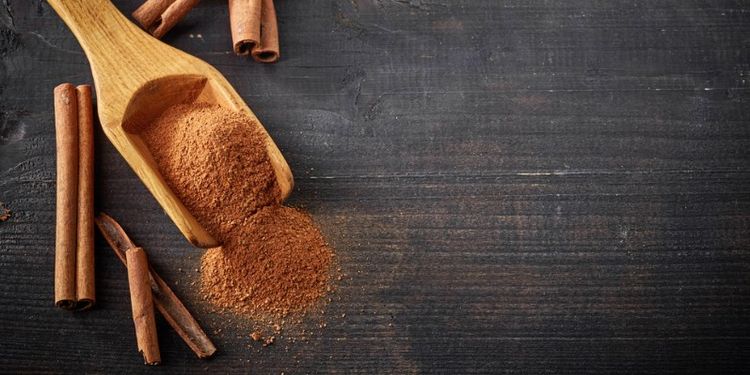
Some herbs that are effective in treating diabetes and blood sugar dysregulation include bitter melon, cinnamon, and fenugreek. Antioxidants are helpful for combating inflammation associated with diabetes and metabolic syndrome.
Bitter melon has traditionally been used as a remedy for lowering blood glucose in patients with diabetes, and it may decrease serum glucose levels.7
Cinnamon has been shown to reduce blood glucose, triglycerides, LDL cholesterol, and total cholesterol in clinical studies.8
Fenugreek seeds are high in fiber, regulating glucose and improving lipid levels in both animals and humans.9
Gymnema is an herb that can reduce sugar cravings in as little as one week.10
Antioxidants such as vitamin C, vitamin E, selenium, and beta-carotene can counteract the damage caused to the arteries by excess blood sugar and inflammation.5 Selenium is also an essential nutrient for thyroid health, and most people are deficient in it, which may contribute to an underactive thyroid.

Several clinical studies have found that elevated manganese levels may help protect against LDL oxidation.
Epsom salt baths can supply the body with magnesium absorbed through the skin, which helps relax blood vessels, lowering blood pressure. Supplemental and dietary magnesium are also effective at doing this.
Relaxing essential oils like lavender essential oil can have a calming effect.
Garlic extract supplementation improves blood lipid profile, strengthens blood antioxidant capabilities, and significantly reduces blood pressure.11
Hawthorn is an herb that may help improve coronary artery blood flow and circulation to the extremities of the body with its antioxidant properties.12

Lifestyle interventions can also be beneficial to alleviate symptoms associated with cold hands and feet.
Acupuncture can help diabetics manage their nerve pain. Acupuncture may trigger the release of natural painkillers and reduce the debilitating symptoms nerve pain.5 Acupuncture also improves general circulation.
Stress management is also helpful in keeping blood sugar managed and the cardiovascular system healthy. Stress stimulates the nervous and endocrine systems in ways that increase blood glucose levels and disrupt healthful behaviors.5 The metabolic changes that occur with stress can lead to high blood pressure, inflammation, and decreased circulation to the extremities as well. High stress also sets the stage for developing thyroid conditions by altering the HPAT axis.
Exercise increases the cell’s ability to respond to insulin, which signals the cell to absorb glucose. This means that the pancreas won’t have to work as hard to make as much insulin, because less insulin will be effective for glucose transport into the cell. This decreases insulin resistance, which is a root problem of diabetes. And diabetes can result in poor circulation. Exercise also improves circulation to the entire body.
As you can see, there are many ways to improve or even resolve this frustrating issue. With some responsible and supervised trial and error, you should be on your way to feeling toasty warm in no time.
